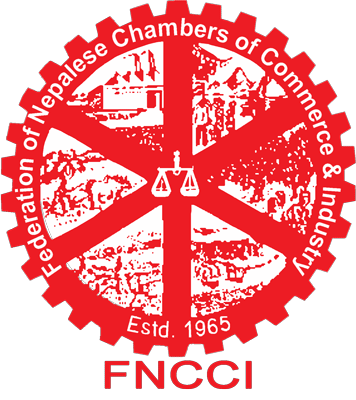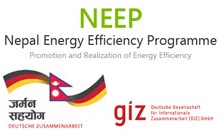Energy Saving Potential
The hotels sector stands on rank 6 among the most energy-intensive industrial sectors in Nepal. Hotels spend almost 8 % of their turnover for energy cost (GIZ/NEEP, 2012). Most hotels have switched from conventional lighting to more efficient CFL and about 10 % are already using most-efficient LED technology. However, 90% of surveyed hotels have neither checked the performance of major energy consuming equipment nor carried out energy audits in their hotels.

Figure 1: Energy cost on product value in % for different industrial sectors in Nepal (GIZ/NEEP, 2012).
GIZ/NEEP baseline survey (2012) estimated the electricity saving potential of Nepalese hotels to be about 30,000 MWh which is equivalent to the annual consumption of about 84,000 households in Nepal. On the thermal side Diesel consumption could be reduced by 200,000 Litre and LPG by 91,000 kg per year. In total Nepal's hotel sector could save about 360 Million NPR every year by implementing most common energy efficiency measures.

Figure 2: Monetary Saving Potential in Nepalese Hotel Sector (GIZ/NEEP, 2012)
Practical experiences show that many options are feasible and cost-effective. For example Annapurna Hotel in Kathmandu installed double glazing in 90 Deluxe category rooms which reduced drastically the sound pollution to the room occupants and at the same time heating and cooling load was reduced by 8-12%. After replacing the garden lighting of seven halogen lights with energy efficient LED and CFL technology they could also reduce energy cost by more than 1,00,000 NPR per year. All rooms of Annapurna are equipped with card-activated occupancy sensors which cut-off the power of all electrical appliances and lights two minutes after the guest has left the room; the saving in electricity was approximately 25–30%.
Experience from the past have identified many options for improving energy efficiency in hotels that are highly profitable, most of them with payback periods of investment of less than 1 year. The following table shows some implemented example options in Nepalese hotel sector with the respected payback (Danida/ESPS, 2005).
Table 1: Energy saving options in hotels and payback period (Danida/ESPS, 2005)

Renewable energy technologies can also help hotels to reduce energy cost: Since more than two years Hotel Barahi in Pokhara is running a biogas plant that converts all kitchen waste and sewage into cooking gas. The construction of the biogas plant cost only Rs 6,00,000 and can produce enough gas to power a stove for five to eight hours a day providing food for hotel guests and 100 staff. The installation of biogas plants for kitchen and sewage waste in Hotels has an average payback period of only six month (IFC, 2012). Solar thermal collectors are also appropriate for hotels for water heating as well as space heating. Good quality technology is available on the Nepalese market and cost effective with payback of investment between six to nine months. Even Solar PV Panels are applicable in Hotels. Annapurna hotel has installed nine highly efficient LED light panels of 28 Watts each which are powered by pure PV Solar system that can power the lights for three days.
Energy Saving Tips
The main areas to tap energy saving potentials in Hotels are lighting, housekeeping, boiler, hot-water and electrical systems as well as HVAC. The installation of renewable energy technologies might also considerably reduce energy cost in hotel operation.
Table 2: Recommended lighting levels for hotels


Figure 1: Comparison of different lighting technologies
1. Use of day lighting wherever is possible.
2. Lighting levels should be up to recommended standards
3. Replacement of inefficient incandescent light bulbs for CFL and consider switching to most-efficient LED lighting technology
4. Installation of occupancy sensors and/or timers for areas that are less frequently used such as hallways, outdoor areas, or public bathrooms
5. Optimization of Lighting System voltage
1. Install a key-activated Guest Room Energy Management System (GREMS) to control lighting, heating and cooling inside the rooms.
2. Improvement of fuel storage and handling system
3. Use of energy-efficient refrigerators and deep freezers
4. Sealing of windows to optimum tightness or replacement of single glazing through double glazing windows to reduce heat or cooling loss in air-conditioned rooms
1. Application of Combustion Gas Analyzer for combustion analysis and combustion tuning of boilers or hot air generators.
2. Installation/maintenance of Steam Traps
3. Optimization of Steam Distribution System (Steam Traps, Piping, Headers)
4. Insulation of Flanges and Valves with Insulation Jackets
5. Improvement of fuel storage and handling system Fuel Switching
6. Replacement of Traditional Boilers with Fluidized Bed Boiler
7. Installation of economizer for Waste Heat Recovery
8. Installation of Air Pre-Heater (APH) for Boiler
9. Installation of Auto Blow Down System in boiler
1. Optimization of capacitor banks for maintaining the Power Factor at optimum level
2. Replacement of Old (Rewind) motors with energy-efficient motors
3. Adoption of the Load Management System
4. Installation of Variable Frequency Drive (VFD) wherever applicable.
5. Load Optimization of Drive Systems (Shuffling of Drive System)
6. Optimization of Water Pump system
1. Replace the Central-air conditioning system with Split Air Condition System
2. Replacement of traditional chiller with energy-efficient chillers
3. Improvement of compressed air system performance
1. Installation of Biogas Plant operated by kitchen and sewage waste to biogas for cooking purpose
2. Consider PV-power lighting, particularly for outside
3. Installation of solar collectors for hot water provision
References GIZ/NEEP, 2012: Baseline Study of Selected Sector Industries to assess the Potentials for more efficient use of energy. Danida/ESPS, 2005: Cleaner Production report of hotel sector. Central Bureau of Statistics (CBS), 2007: Census of Manufacturing Establishments carried out in the fiscal year 2006/07. International Finance Corporation (IFC), 2012: Sustainable Energy Finance Market Study for Financial Sector in Nepal



